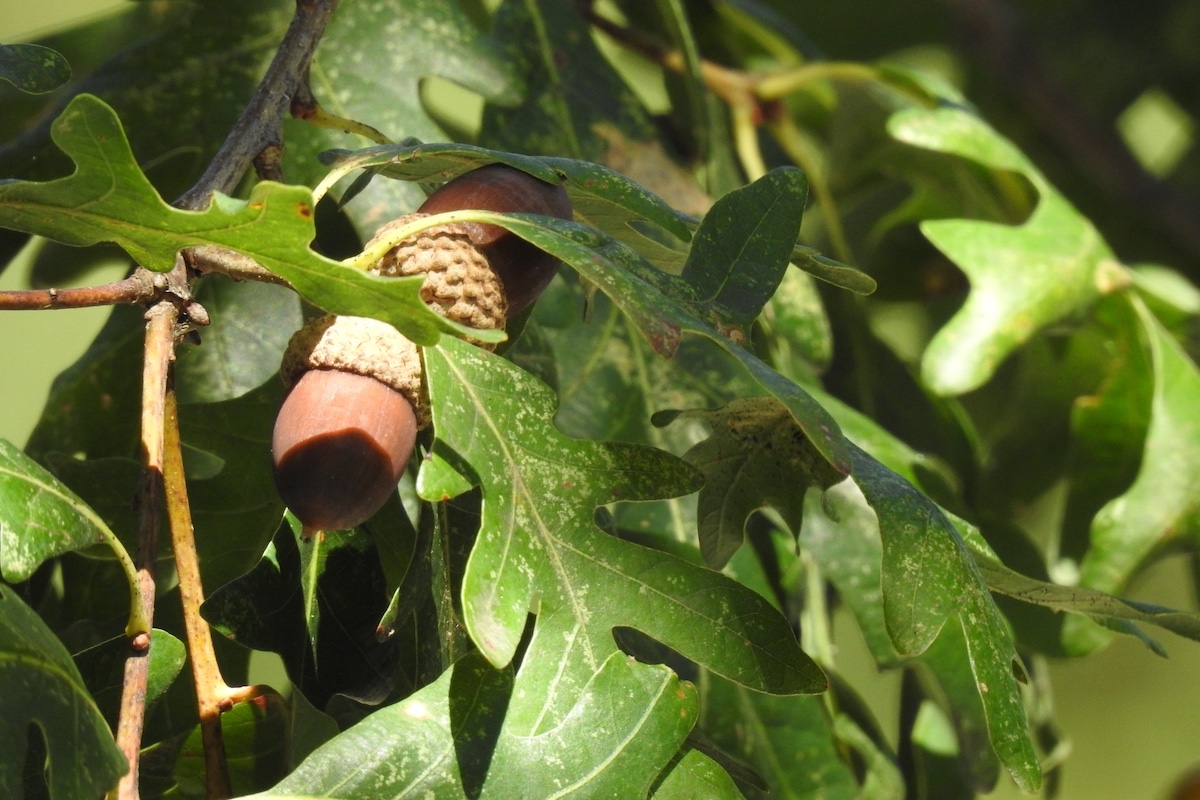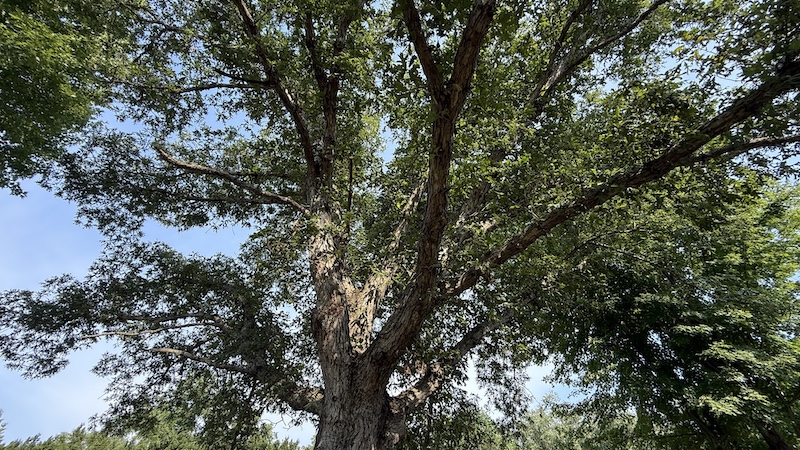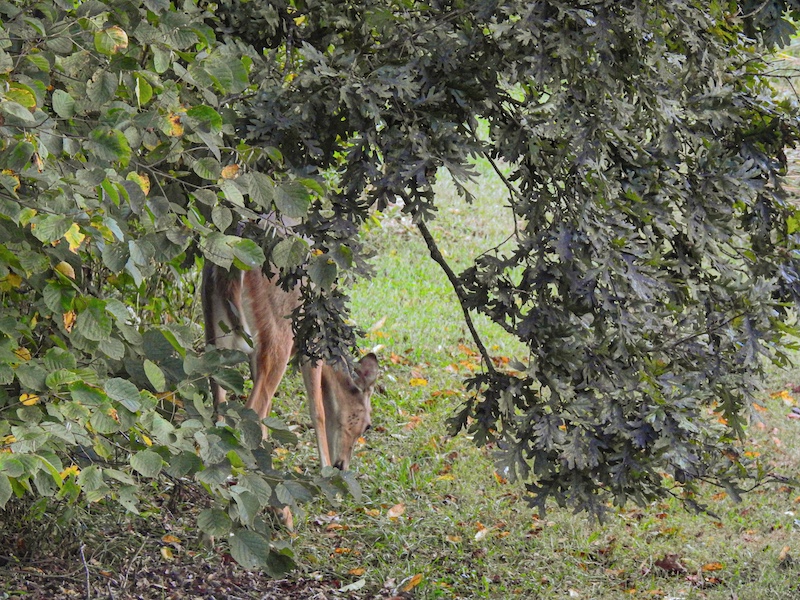
Photo by Patty Gillespie.



Photo by Patty Gillespie.
Growing up in the southwest suburbs of Chicago, it seemed to me that there were thousands of oak trees. Most of them were white oaks (Quercus alba), and some of them were quite old.

As time went on, and I got older, more of the oaks seemed to die and disappear. The soil under old oaks was never meant to be compacted or have an understory of turf grass; they prefer native sedges, grasses and forbs. Most likely those old oak trees were used in someone’s fire pit or wood-burning stove. I am sure the old groves of trees were a very attractive setting to build a home or a community. The old oaks offered shade in the summer, wind breaks in the winter and a good supply of wood for cooking, heating or even building a house.
Later in Illinois’ history, mature oaks were harvested in great numbers to make wooden barrels that were used in liquor production. If you were to go to Peoria you might have a hard time finding many old-growth trees until you traveled to western Peoria County. From there it took two days to haul those massive logs to the 24 breweries and 73 distilleries that once existed in the city of Peoria. It took a tremendous number of oak trees to run those businesses.

Oak trees provided for native people long before settlers arrived. Indigenous tribes such as the Dakota, Ojibwa, Cherokee, Pottawatomie, Omaha-Ponca, Winnebago and Pawnee had many uses for these trees. One common medicine that has been documented by several historians and tribal members was for dysentery or ailments of the digestive track. Oak trees have tannic acid in their sap and bark. The inner bark would be peeled off and made into a tea to help to cure such ailments. You couldn’t use it for long; it is too astringent and can cause other health problems after prolonged use. People of the Cherokee Nation chewed that inner bark to cure canker sores in the mouth. Many western tribes used oak root tea for settling the stomach in an infant.
The bark of oak trees was used to produce dyes for all kinds of applications. Some of the most beautiful and intricate baskets are made by the Cherokee Nation. Strips of oak wood are used to make sturdy baskets for food collection, cradleboards for carrying children or fish traps. The dye produced from the bark of the oak would make these baskets works of art. The production process for these baskets has been taught for hundreds of years and will be taught for hundreds more. Examples of these baskets are at the Museum of the Cherokee Indians in South Carolina.

The word for a bumper crop of acorns in autumn is mast. Having a mast year means that acorns are everywhere. With that bumper crop you will probably see all the usual suspects eating and hiding as many acorns as they can. More than 100 species of vertebrates are known to consume acorns in the United States—squirrels, deer, wild turkeys, chipmunks and many more animals rely on acorns to survive. Squirrels have a particularly interesting symbiotic relationship with oak trees. In a good mast year, you can watch squirrels hastily hide acorns everywhere. Squirrels don’t have the best memories so they at times do not find the acorns they buried, and a seedling starts to grow.
From the invertebrate world, hundreds of species of insects rely on oaks, and that reliance is during all stages of their life. In turn, those insects feed local songbirds during the annual nesting season.
Not only do oaks provide bountiful foods for many forms of life throughout the year, but behind the cover of leaves or within the bare branches, wildlife seek the protective cover of an oak tree.
When I was young I used to collect acorns and pull them apart, and I always pondered why we don’t eat them. Later I learned that many Indigenous tribes did eat acorns. The meats of the nut were boiled three times, with the water dumped out and refreshed between each boiling to remove the acidity. Crushed, the acorns were treated like mashed potatoes and little cakes made that were wrapped in leaves, providing a good source of food. Many western tribes, such as the Pawnee, used ashes of the basswood tree to leach out the acidity out of the acorns.
I used to send oak leaves to my cousin in Los Angeles so he could spread them out in his yard and rake them into a pile and roll in them, as we did as youngsters. Over the years, I have met many people who packed up their homes and moved to warmer climates. They wanted to stay away from Midwest winters but say the one season they miss the most is autumn. I can’t blame them as there is nothing more pleasant than a chilly morning with a cup of coffee looking at a beautiful oak-filled tree lines of Illinois.
I hope you all can take time out of your busy schedules to visit one of Illinois Department of Natural Resources’ many parks this autumn. Do not hesitate as the Illinois weather can change quickly. This time of the year is particularly beautiful.
Thomas Hintz is the Site Superintendent at Lincoln Trail State Park and Walnut Point State Park.
Submit a question for the author